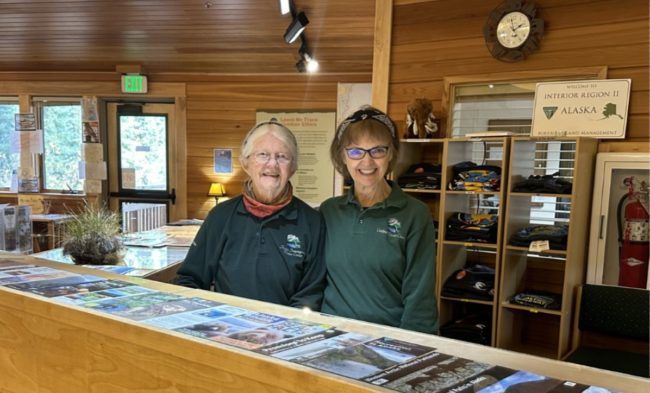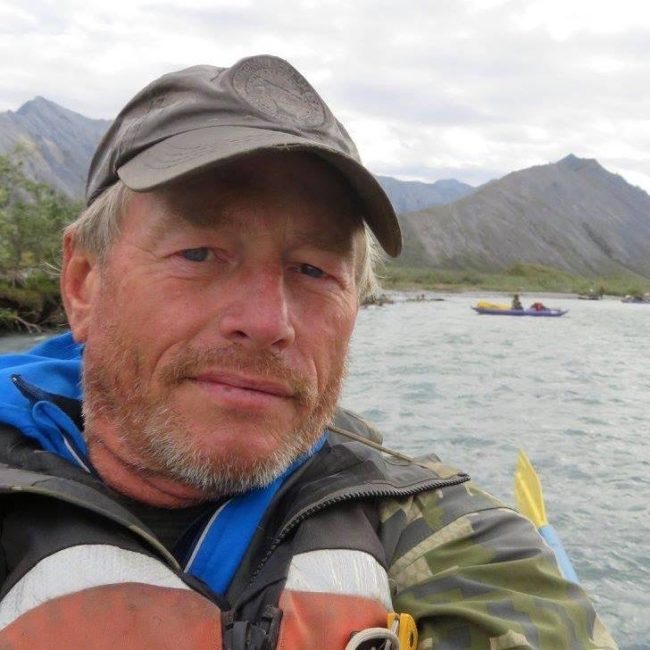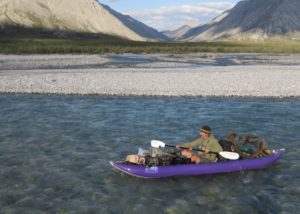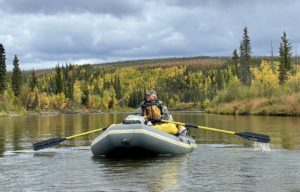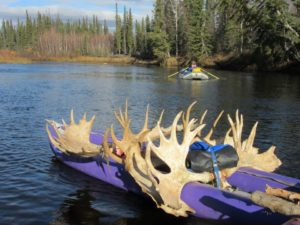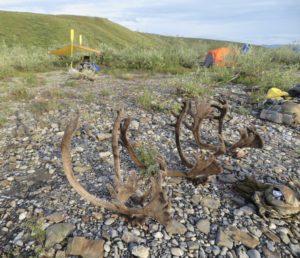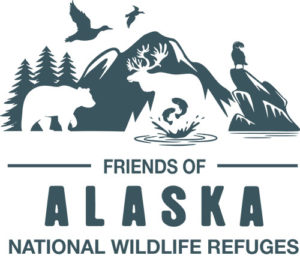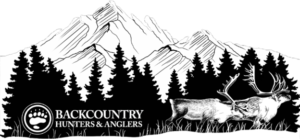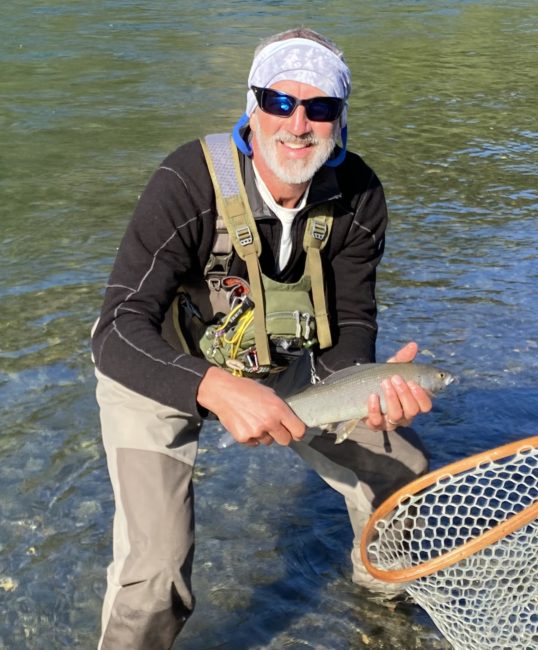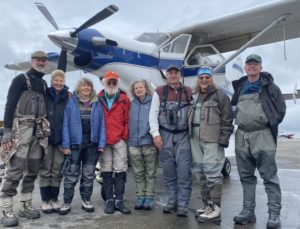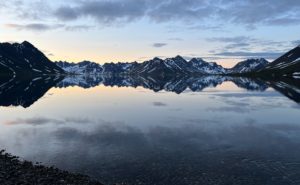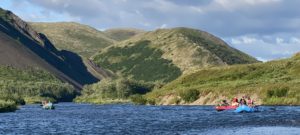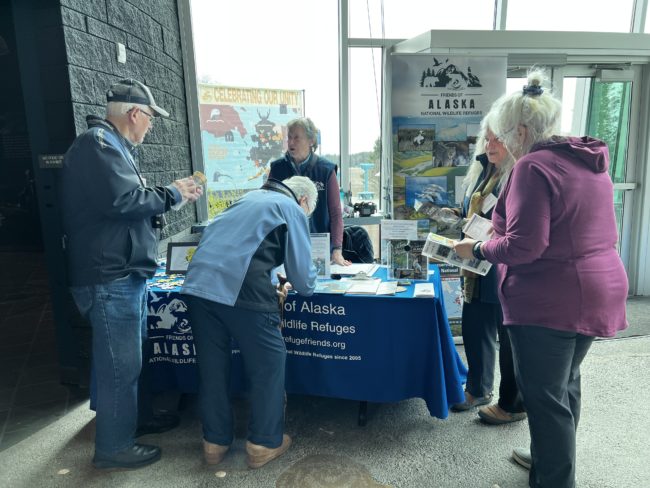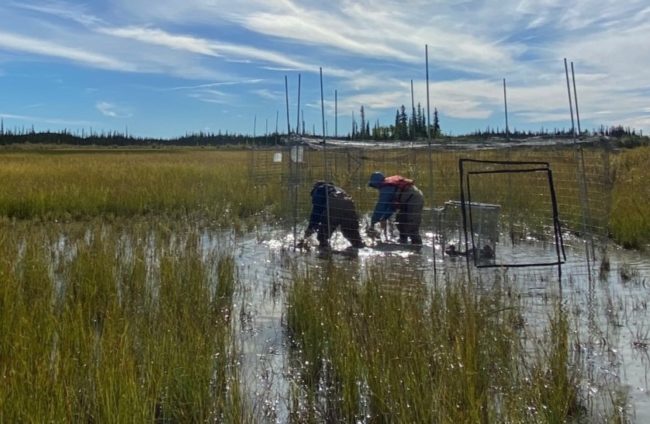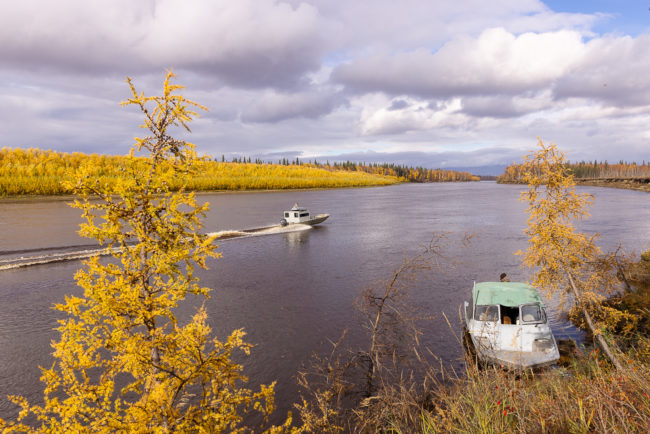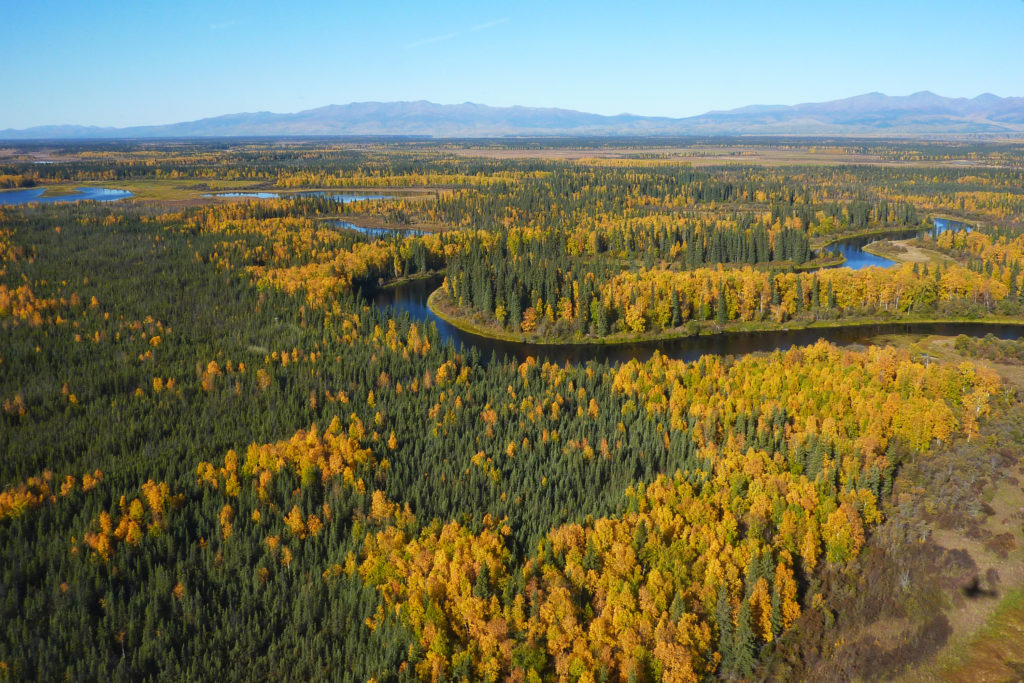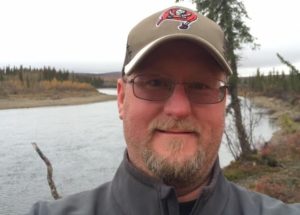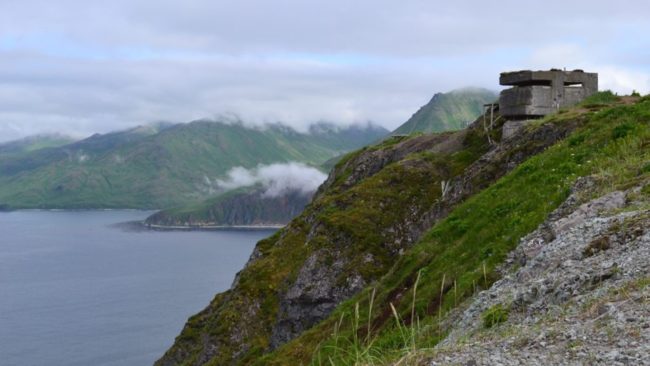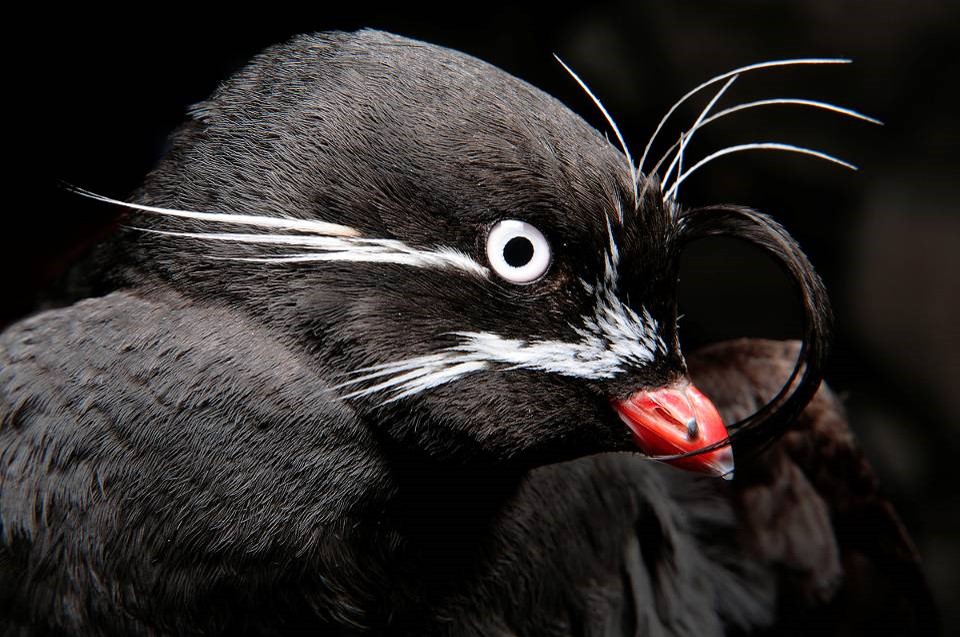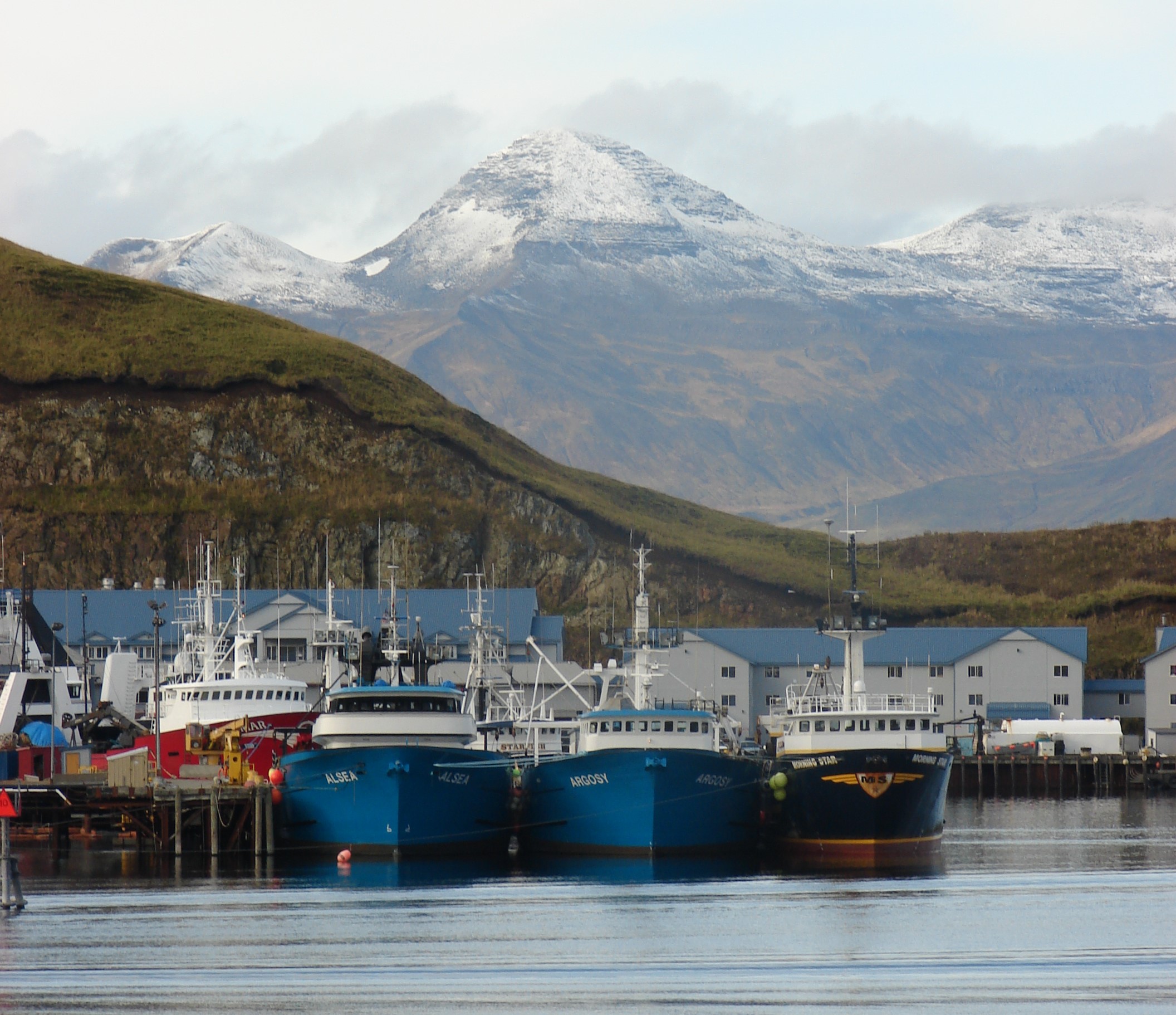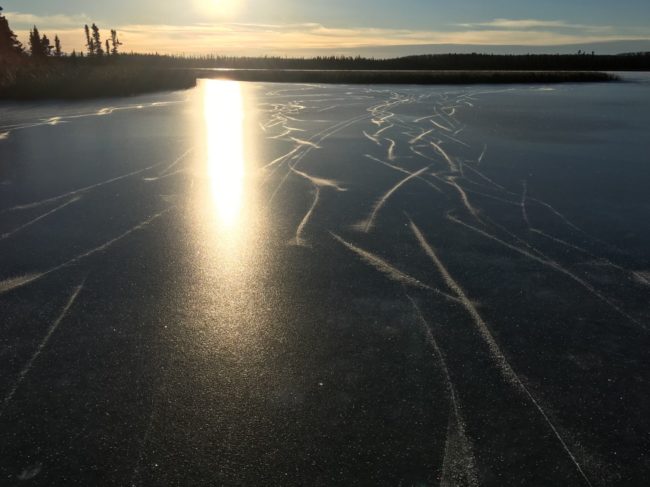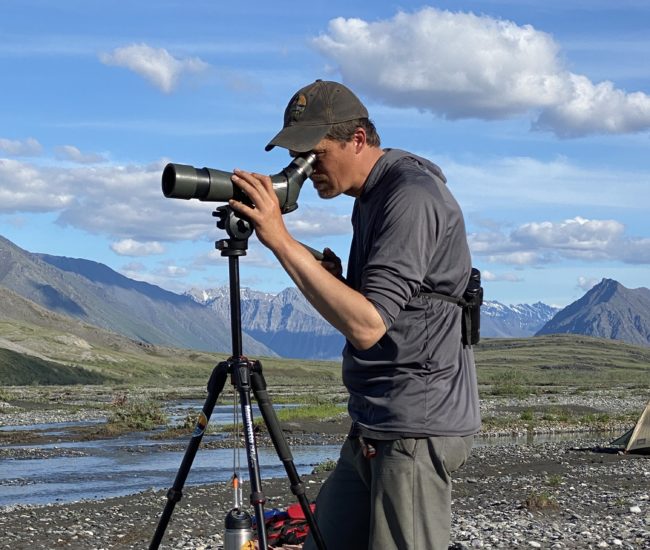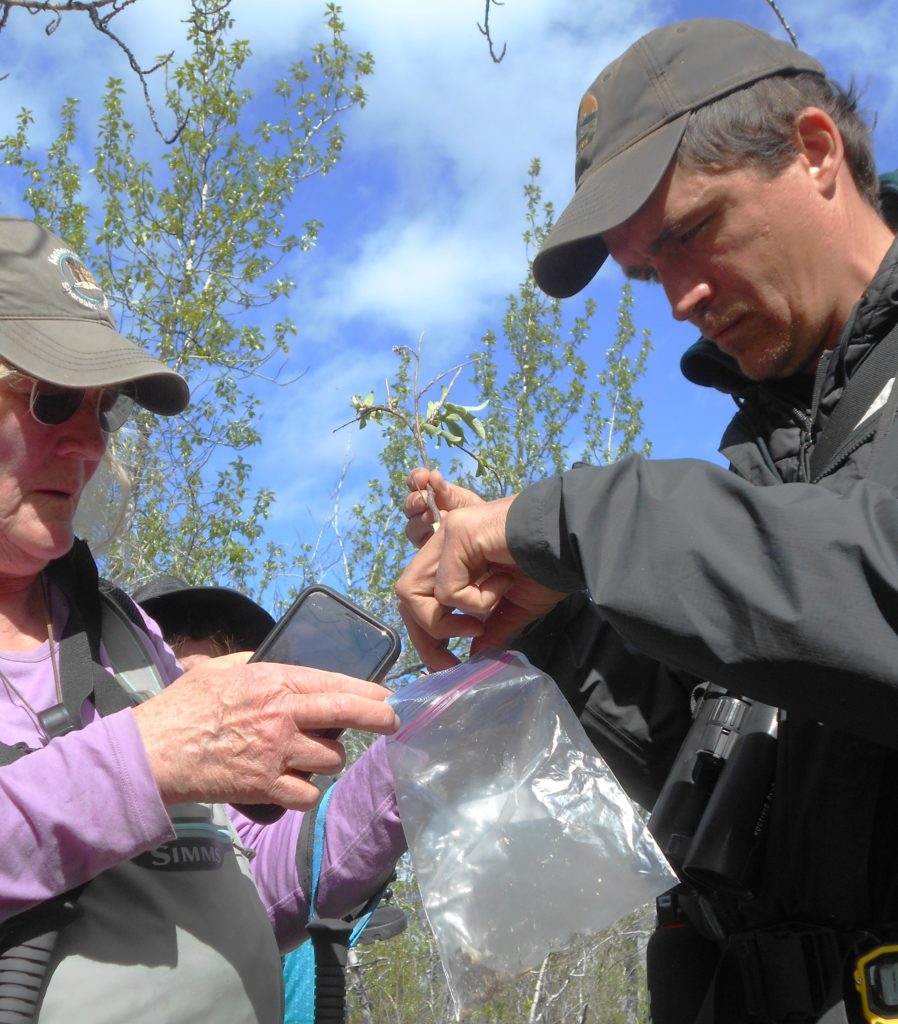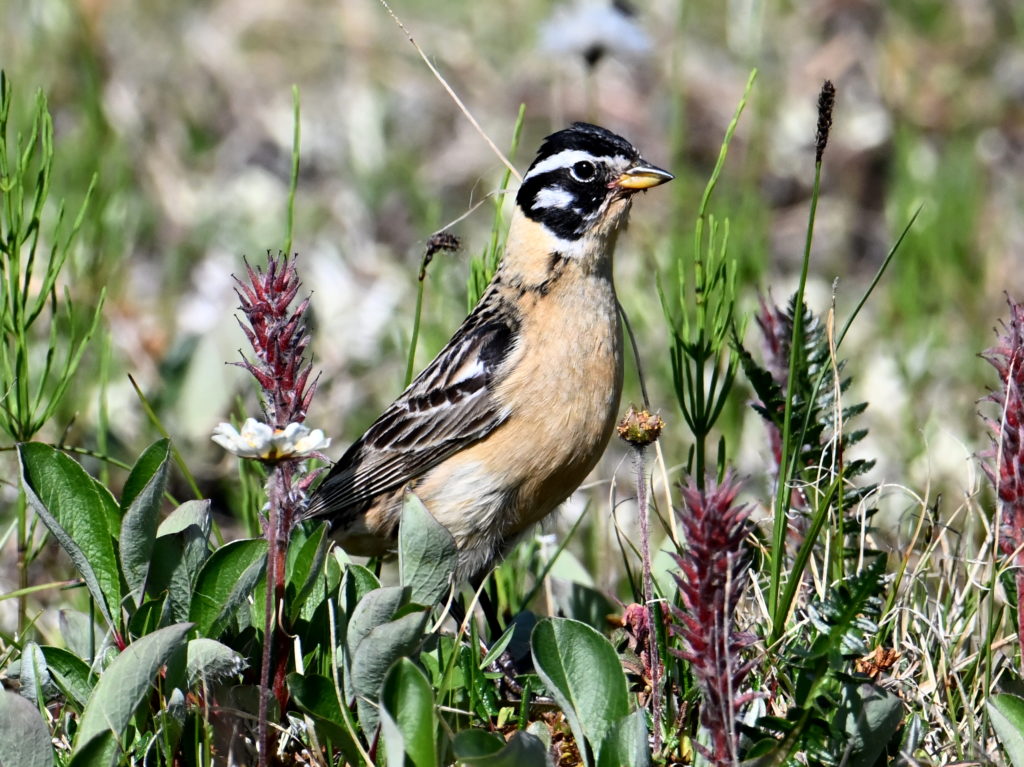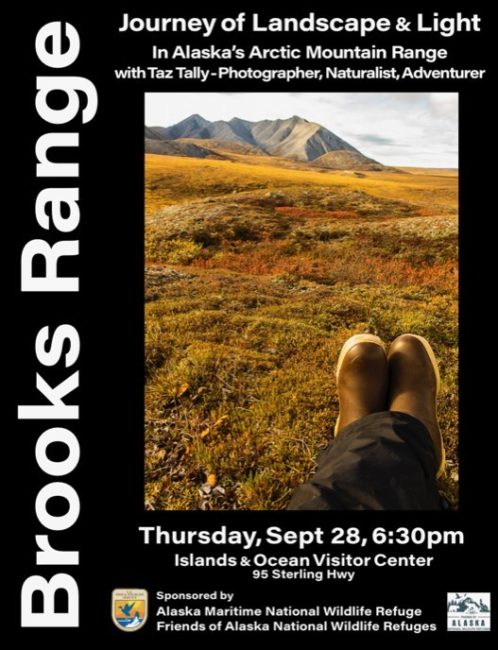My first view of the Arctic Interagency Visitor Center was through a windshield splattered with mud. I had just completed, in pouring rain, the drive from Fairbanks to Coldfoot over the Dalton Highway. In spite of that grimy beginning my two week volunteer time was a beautiful experience. The southern edge of the Brooks Range was in full fall colors and the weather remained warm and often sunny. The South Fork of the Koyukuk ran clear, no ice.
The visitor center is an imaginative building with enticing exhibits that give visitors a good introduction to the vast wilderness reaching in all directions around them: Arctic National Wildlife Refuge to the northeast, Kanuti National Wildlife Refuge to the southwest, Yukon Flats National Wildlife Refuge to the southeast, Gates of the Arctic National Park to the northwest, and the Dalton Highway Corridor (BLM). It was very fun to interact with visitors who were trying to understand wilderness and how to experience it.
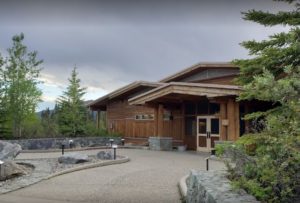
The staff representing the three agencies (Fish & Wildlife Service, National Park Service and Bureau of Land Management) were friendly, helpful and appreciative. Judy Brant and I were there to help with the final two weeks of being open to the public. There were several days when the visitor count was well over 100, and there were never any days without interesting visitors. One of our jobs was keeping count and never counting anyone twice. Sometimes this required group effort! Many visitors were tourists who wanted to experience the Dalton Highway. Others were hunters, miners visiting their claims and aurora watchers.
There is a Fish and Wildlife Service field camp a short distance north of Coldfoot with a variety of lodging possibilities from dry cabins to comfortable houses. Judy and I stayed in a house that had recently been upgraded. It was very comfortable and had indoor plumbing; a luxury in the far north. We both appreciated the convenient housing that gave us time to do some exploring.
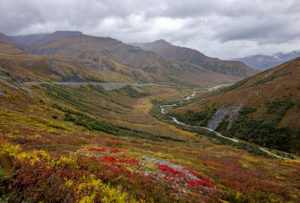 Fall colors on the Dalton Highway. PC Randy Lewis
Fall colors on the Dalton Highway. PC Randy Lewis
